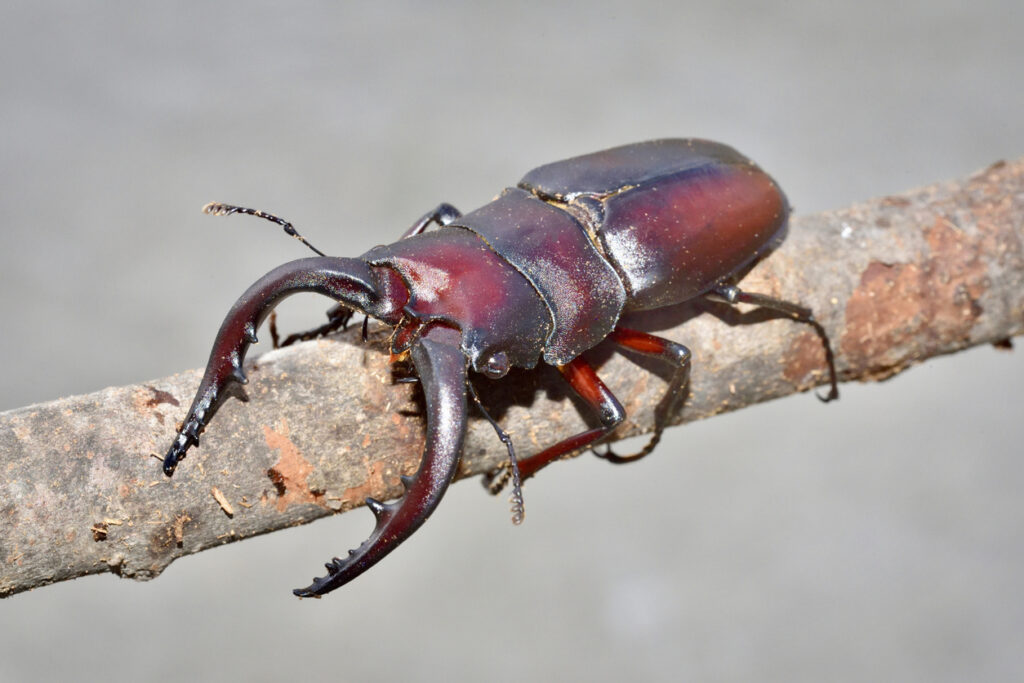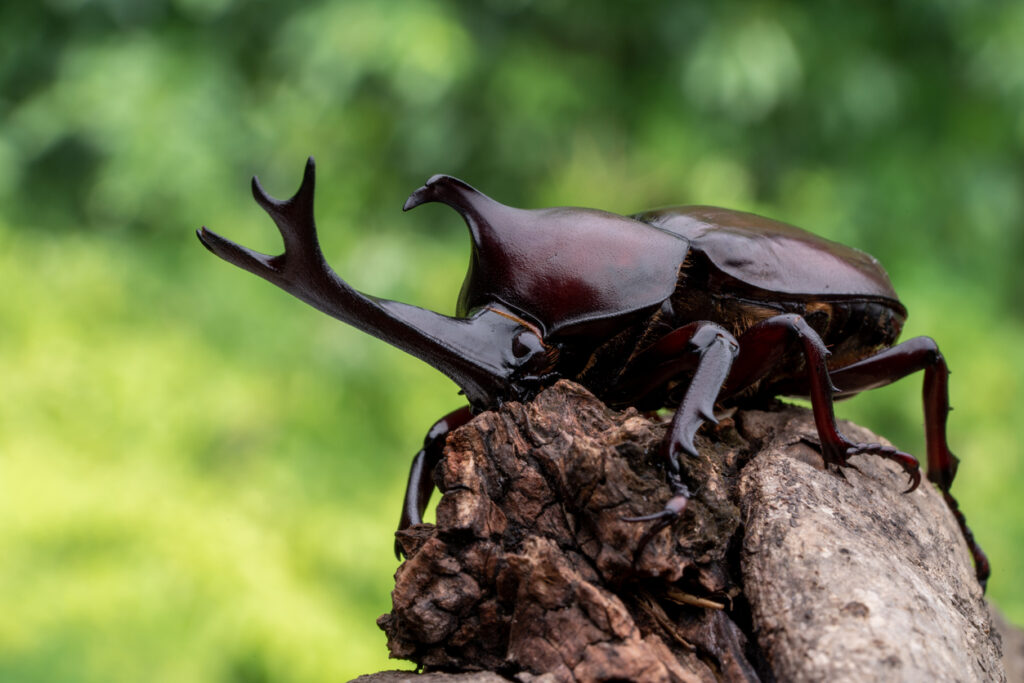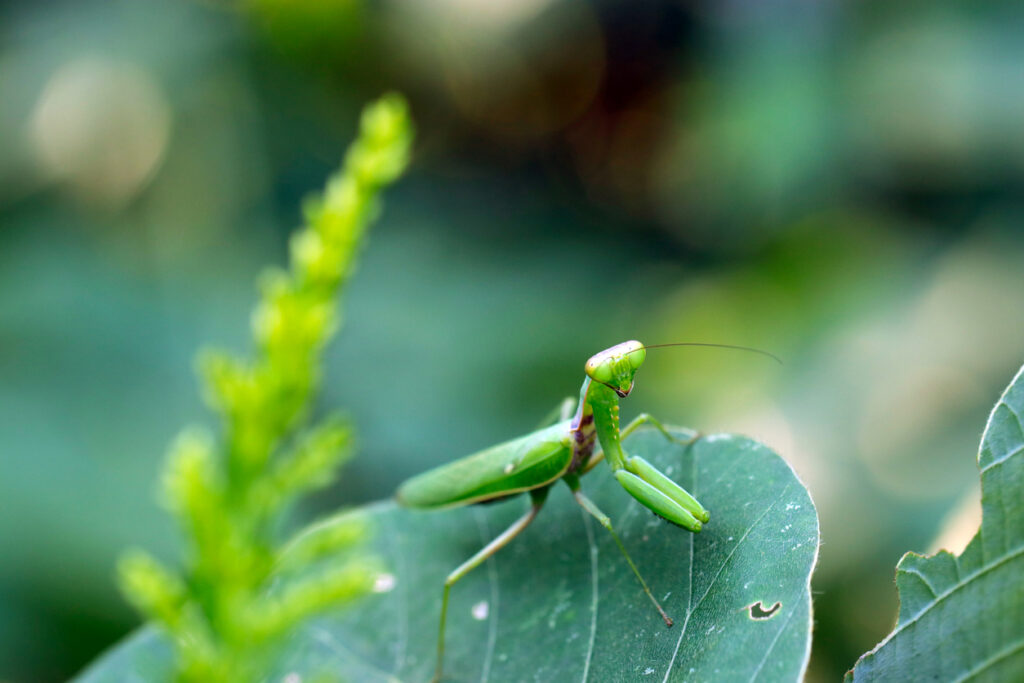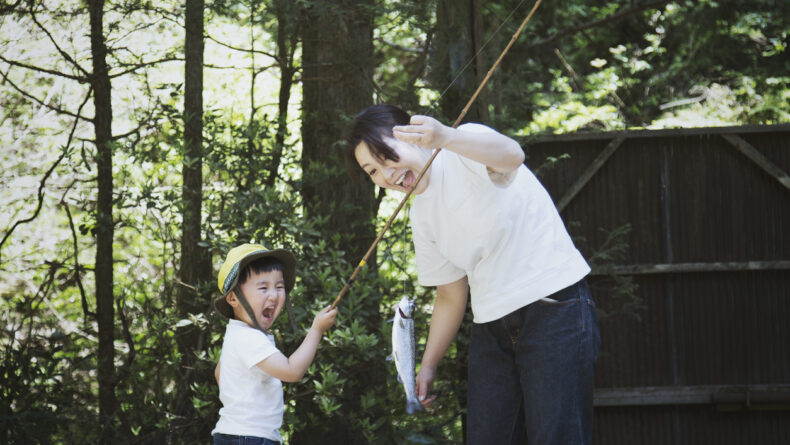Bug-Catching in Japan: A Simple Summer Pleasure
Get to Know Four Famous Bugs and How to Catch Them
Bug-catching is the no-screen hobby you need this summer! With equipment from the hyakkin (100-yen store), sun protection and our guide in hand, you and your kids can get to know Japan’s most popular insects.
As the school year hits the halfway mark in Japan and you’re looking for fun activities to entertain your little ones, why not consider bug-catching? Before you wince too much at the thought of seeking out, catching and potentially housing insects this summer, know that interest in insects and bug catching for children has a long history in Japan stretching back centuries. Still not convinced? Think about how capturing insects is at the root of one of the largest popular culture franchises in history: Pokemon.
 © Photo by iStock: KeongDaGreat
© Photo by iStock: KeongDaGreatLike many Japanese youth, Pokemon’s creator, Tajiri Satoshi, grew up catching bugs. As a game developer, Tajiri took the childhood joys of researching, strategizing and capturing insects and crafted the game that millions of us enjoy today. So, whether this is your first foray into your local greenery or you’re a seasoned bug hunter, read on to learn about four popular insects to add to your collection this summer!
Sawtooth Stag Beetles
 © Photo by iStock: Geobacillus
© Photo by iStock: GeobacillusNokogiri kuwagata or sawtooth stag beetles are among some of the most sought-after insects during bug-catching season. While stag beetles come in hundreds of varieties, the sawtooth type has distinctive antler-like jaws that jut out from its reddish-dark brown body. Found throughout Japan, these beetles are valuable catches to add to your collection. Although males can measure over 70 millimeters long, they can also be less than half that length. Females tend to be much smaller at 20-40 millimeters with shorter jaws.
Catching Tips:
Catch this beetle from June to the middle of July. When trying to hunt them down, check out wooded and mountainous areas. They are known to like kunugi (sawtooth oak) and konara (pin oak) trees, whose sap they enjoy drinking. Sawtooth stag beetles are nocturnal, meaning (unfortunately!) they are most active at night and early morning. Although bug catching in wooded areas at night is not recommended for little ones due to potential dangers, a proven way is to shine a bright light into tree hollows and roots to attract their attention. But, since they are also attracted to sources of light, you can always check vending machines and light posts in the wee hours to catch a glimpse of one.
Cicadas
 © Photo by iStock: timltv
© Photo by iStock: timltvFew things mark the end of the rainy season and the beginning of a scorching summer in Japan more quintessentially than when the cacophonous sound of semi (cicadas) fill the air. Cicadas can be found all across Japan, from Hokkaido to Okinawa, come in several varieties and are a popular choice for bug catchers.
Coming in at about 60-70 millimeters in length, kumazemi or bear cicadas are the largest in Japan. Active around the end of July and into September, these greenish-yellow insects with transparent wings can be found early to mid-morning and can be identified by their washa-washa-washa and sha-sha-sha sounds.
While the large brown cicada or aburazemi, sized a little smaller at around 50-60 millimeters long, is quite common throughout Japan, China and Korea, its characteristically opaque wings make it a rare find in other parts of the world. Be on the lookout for this one in late August through to September.
The most often heard species and most represented in popular culture is the minmin cicada, named after its distinctive miin-min-min-miin sound. Measuring about 55-60 millimeters, these semi often hang out on tree trunks at the park from late July to early September.
Catching Tips:
Semi are found throughout the summer (although the exact timing depends on the type, as explained above) in wooded areas and can be caught using a bug-catching net. However, their wings and legs are fragile so be careful when catching and transferring them to a bug box. Also, cicadas do fly, but not while singing so a good time to catch one is mid-song!
Japanese Rhinoceros Beetles
 © Photo by iStock: ruiruito
© Photo by iStock: ruiruitoAnother popular choice for bug catchers and collectors are kabutomushi (rhinoceros beetles). These reddish-brown insects are known for the unique y-shaped horns that sit atop male bodies, a feature that recalls the samurai helmets of the feudal era. Like many of the bugs that appear on this list, males are longer than their female counterparts, measuring up to 80 millimeters long compared to 60 millimeters, respectively. These beetles spend most of their lives underground and appear aboveground in their final months looking to mate.
Catching Tips:
Kabutomushi most enjoy chestnut, oak and gingko trees and are most active between June and August. To find them, check in areas with exposed sap or fallen leaves by these trees’ roots. Rhinoceros beetles are nocturnal so at night or early morning would be the best times to catch one. If you see one in a tree with a thin trunk, you can also shake or lightly kick the tree to knock the beetle down.
Praying Mantis
 © Photo by iStock: SAIGLOBALNT
© Photo by iStock: SAIGLOBALNTFound across Japan, but mainly in Honshu, Shikoku and Kyushu, kamakiri (praying mantises) are known for their long bodies, which can grow to 90 millimeters for males and 105 millimeters for females, triangular-shaped heads and their folded forelegs which resemble the act of praying. However, there are slight differences between the types of mantises you’ll find in Japan. For example, those living in the south tend to be larger with males coming close to the size of females while mantises in northern areas are typically smaller. The color of their bodies will also differ with some being more green and others more brown.
Catching Tips:
All kamakiri are active in the later part of summer and into the autumn months. From July to October, find them in grassy or fielded areas and near riverbanks. Whether they are resting in the grass or perched on a branch, they can be caught with bare hands or nets and are known as a relatively easy catch.
Bug-Catching Kit
 © Photo by iStock: kohei_hara
© Photo by iStock: kohei_haraBefore you head out into nature in search of summer bugs, you’ll need to pick up some supplies, most of which are available at your local dollar shop. While a net, preferably one attached to the end of a long rod and a box or container to carry your catches are the absolute minimum you’ll need on your adventure, check out some of the following to up your bug-catching game!
- Gloves: Since you’ll sometimes have to lift rocks or move through bushes to chase down your catch, these may save you from scratches and cuts.
- Boots: For those heading down to the river, boots will certainly be handy to keep your feet dry as you step through water.
- Flashlight: This will be handy if you’re hunting at night or in the early morning. Not only will it help you see in dark areas, it may also attract some bugs your way!
- Trowel: Bugs like the earth and it can be useful to get digging to find some that have burrowed beneath.
- Sprays of all kinds: Ones to repel insects you don’t want to attract, such as mosquitoes and ticks, as well as sprays to help the itchiness in the event you do get bitten will be your best friends this summer.
- Cap or hat with a visor: With Japan’s summer sun overhead, it’s always a good idea to keep its rays out of your eyes and off your face.
- Water: Stay hydrated out there!
With these four bugs and your 100-yen store loot, you’re well on your way to starting a collection of critters. Next time you see some neighborhood kids armed with nets and boxes, take a look around and see if you can spot (or hear) one of the bugs featured on this list!
















Leave a Reply